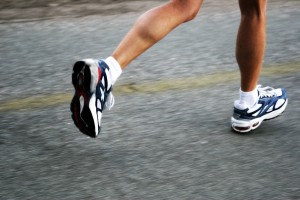Signs that you need to back off
It would be a rare thing to hear a life-long runner say “I’ve never been injured”. Statistics vary, but most studies report that runners will experience at least one injury every year. Some of these injuries are very short term, and others can take you out of running for weeks if not months. The important question is, what do you do about it? The options would seem to be: back off completely from running; modify training schedule/intensity/mileage; or try and run through it. There are several key indicators with running injuries that can help you determine what your best option to allow recovery is.
Pain only after running: Having an isolated soreness after a workout is not unusual. If this pain is short term and does not interfere with subsequent runs, then it is likely due to your body transitioning to increased mileage or training intensity. However, if it is consistently present and in an isolated area or getting worse, there should be consideration to backing off or modifying your training.
Pain during running: Some runners experience discomfort or pain early in their runs, but then seem to “loosen up” and feel better as they continue. This would not be cause for concern. On the flip side, pain that is progressive throughout a run is a sure indicator that something is wrong; either a specific muscle/tendon/tissue needs rest, or there is a biomechanical imbalance underlying that pain.
Painful running and painful living: Pain that has progressed to being present with normal daily activities (walking, stairs, simply being on your feet) is a red flag, and definitely indicates you need to back off. Pain like this suggests a more serious inflammatory process is at work, or a potential bony injury.
So what does “backing off” entail? Avid runners have a hard time respecting those in the medical/sports medicine industry who, when hearing about how much running you are doing, simply say…”You need to quit running and take up a different sport; you’ll feel better”. To be more specific, let’s consider some options.
- Non-weight bearing cross training via biking or water running: The basic premise here is to eliminate the pounding of running and allow “relative rest”. Remember, each time you land on a single leg the forces are 2-3 times body weight (150 lb man = 300 to 450 lbs. of force). A key to this approach is that this training needs to be pain free!
- Cross training via elliptical machine: These machines allow for weight bearing activity, but without the harder landing phase.
- Modifying training schedule: Instead of running your usual four to five times a week, consider cross training half or some of those days, or skipping the weekend long run for one week. Taking this approach can often allow you to get back on track within just a week or two.
Rest: Yes, sometimes this is the only way to calm things down and get back on track. If your pain has been fairly constant whenever you are on your feet, rest is indicated at least until you are pain free for walking and simple daily activities. Rest would also include appropriate use of ice or heat, depending on the condition.
If the above changes do not result in a breakthrough for you, it’s time to get the cards on the table:
- Get a clear medical diagnosis: Different injuries are managed medically in a variety of ways, but the point is you need to get a clear diagnosis! For example: is it really shin splints or do you have a stress fracture?
- Get a specific “return to running” strategy: While rest or modified training might be part of your strategy, your best bet is to get an evaluation with a good physical therapist that knows running biomechanics, and is adept at correcting the underlying imbalances that are contributing to your pain. In many cases, they may allow you to continue running while the therapy progresses.

0 Comments